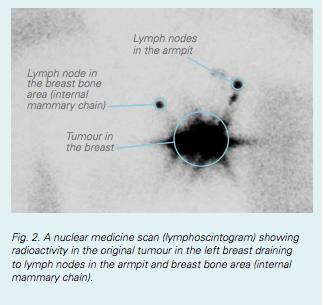

Learn more about intraductal papillomas here.

Ductoscopically guided microductectomy, for instance, allows surgeons to target a specific portion of the milk duct, then remove the papilloma through the nipple itself. However, minimally invasive techniques are now available that produce little to no scarring. Traditionally, intraductal papillomectomies have involved the removal of the milk ducts under the nipple, which can cause scarring and other deformities. This procedure treats benign (non-cancerous) tumors called papillomas that are growing in one or more milk ducts and that can produce an unpleasant nipple discharge. In fact, the majority of biopsy results (about 80 percent) show no cancerous cells. Needing a biopsy does not mean you have breast cancer. This is the most invasive form of biopsy. Excisional biopsy: A surgeon uses a scalpel to remove the entire area of suspicious breast tissue, as well as some additional surrounding tissue.This procedure is often used when a needle biopsy is inconclusive. Incisional biopsy: A surgeon uses a scalpel to remove a portion of the suspicious tissue.This procedure typically does not leave a scar. It is usually inserted three to six times. Core needle biopsy: A slightly larger needle is used to remove a sample of cells.This is the least invasive form of biopsy and usually leaves no scar. Fine needle aspiration biopsy: A thin, hollow needle is used to remove a sample of cells.There are several different types of biopsies:

It is a common and usually simple procedure. Biopsies involve the removal of a small amount of tissue, which is then examined by a pathologist for signs and traits of cancer. Sentinel lymphadenectomy for papillary thyroid carcinoma is feasible, safe, and can identify patients who may benefit from central neck dissection.A biopsy is a diagnostic procedure, which means it helps identify the characteristics of a lump or other abnormality that was found during a clinical screening or imaging test. There were 43 patients (91%) who underwent central neck dissection 26 (60%) had additional metastases. Also, 47 patients had a positive SLN on frozen section, with an additional 24 node-positive patients on permanent section, for a total of 71 (37%). At least 1 blue node was found in 192 patients (91%). Tumors were ≤2.0 cm (T1) in 142 patients (67%), 2-4 cm (T2) in 35 patients (17%), >4 cm with minimal invasion (T3) in 32 patients (15%), and locally invasive (T4) in 2 patients (1%). Of these, 165 patients (78%) were female and 46 (22%) were male. Locally advanced disease, previous thyroid surgery, or lymphadenopathy on preoperative imaging or intraoperative palpation were exclusion criteria.Ī total of 211 patients underwent SLN mapping. Central neck dissection (CND) was performed if the SLN was positive on frozen section. Intratumoral injection of blue dye was used to identify the SLN.

The purpose of this study was to report our experience with sentinel lymph node dissection (SLND) for papillary thyroid carcinoma, to evaluate the feasibility and safety of the procedure, and to examine its potential utility as a guide for central neck dissection.Ī retrospective chart review of patients undergoing total thyroidectomy from January 1998 thru January 2010 was conducted.


 0 kommentar(er)
0 kommentar(er)
